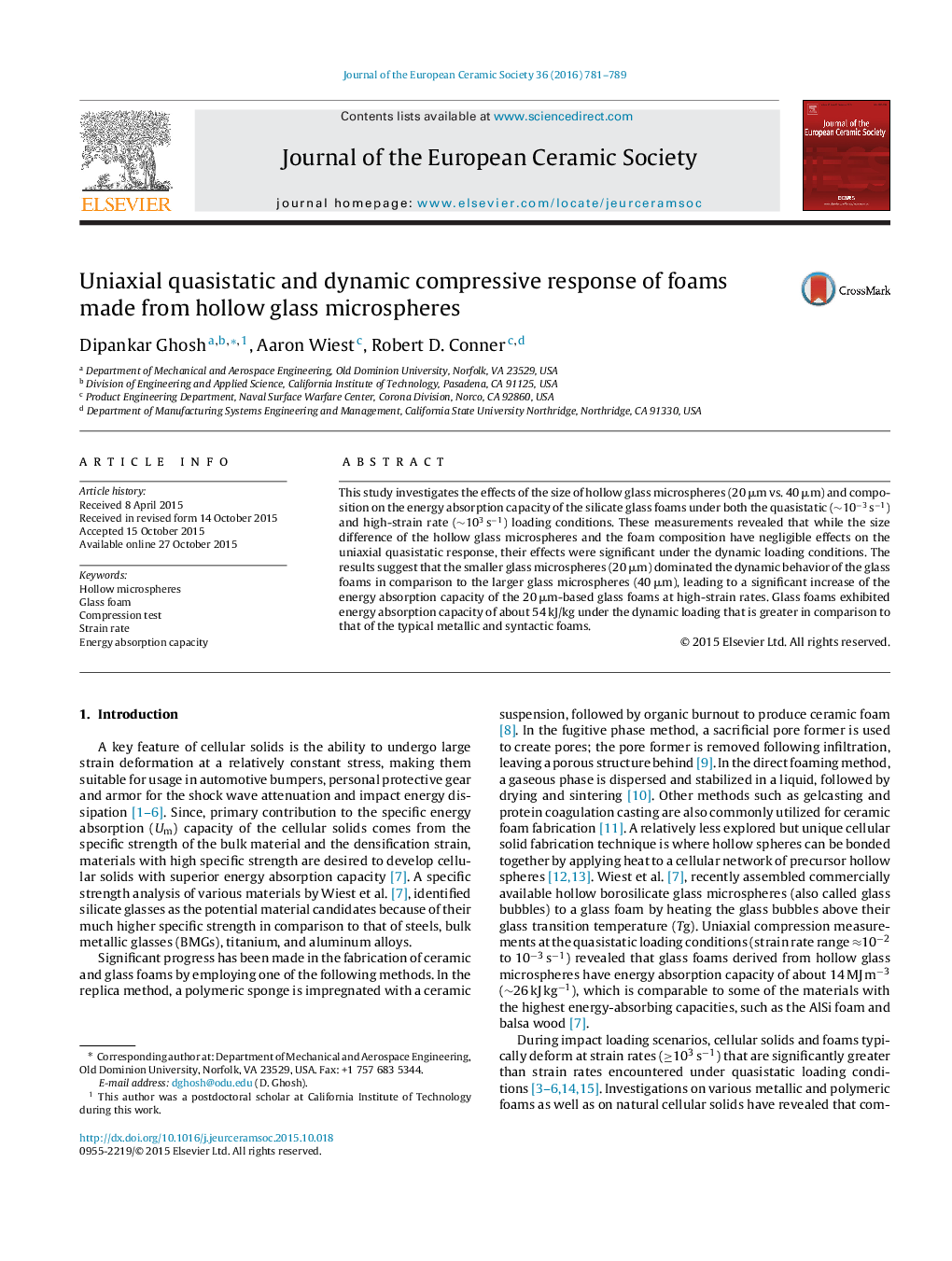| Article ID | Journal | Published Year | Pages | File Type |
|---|---|---|---|---|
| 10629435 | Journal of the European Ceramic Society | 2016 | 9 Pages |
Abstract
This study investigates the effects of the size of hollow glass microspheres (20 μm vs. 40 μm) and composition on the energy absorption capacity of the silicate glass foams under both the quasistatic (â¼10â3 sâ1) and high-strain rate (â¼103 sâ1) loading conditions. These measurements revealed that while the size difference of the hollow glass microspheres and the foam composition have negligible effects on the uniaxial quasistatic response, their effects were significant under the dynamic loading conditions. The results suggest that the smaller glass microspheres (20 μm) dominated the dynamic behavior of the glass foams in comparison to the larger glass microspheres (40 μm), leading to a significant increase of the energy absorption capacity of the 20 μm-based glass foams at high-strain rates. Glass foams exhibited energy absorption capacity of about 54 kJ/kg under the dynamic loading that is greater in comparison to that of the typical metallic and syntactic foams.
Related Topics
Physical Sciences and Engineering
Materials Science
Ceramics and Composites
Authors
Dipankar Ghosh, Aaron Wiest, Robert D. Conner,
